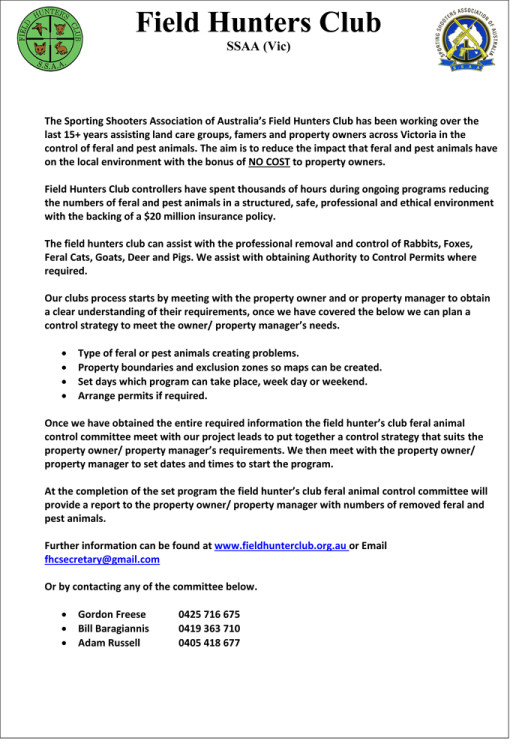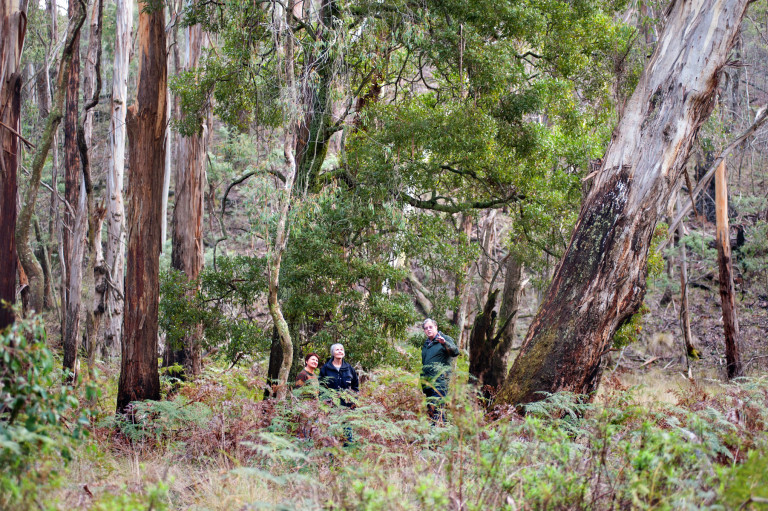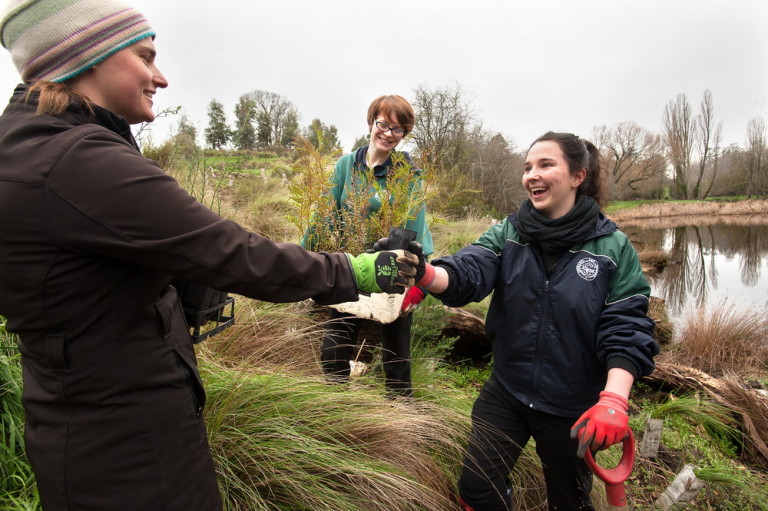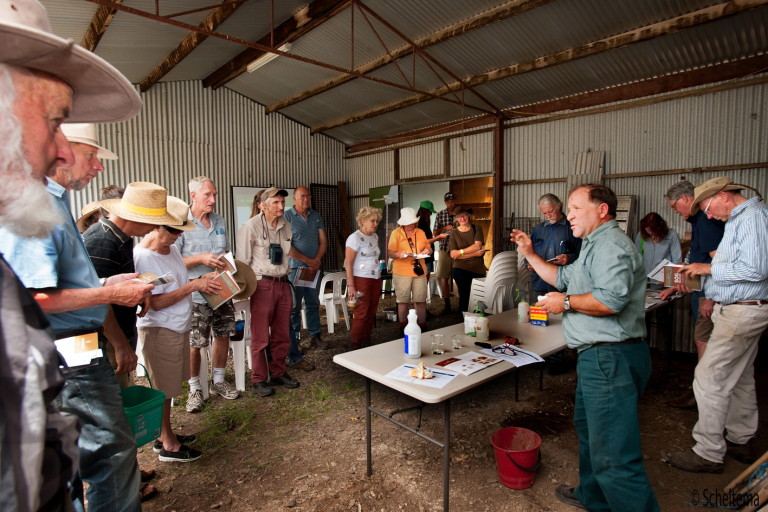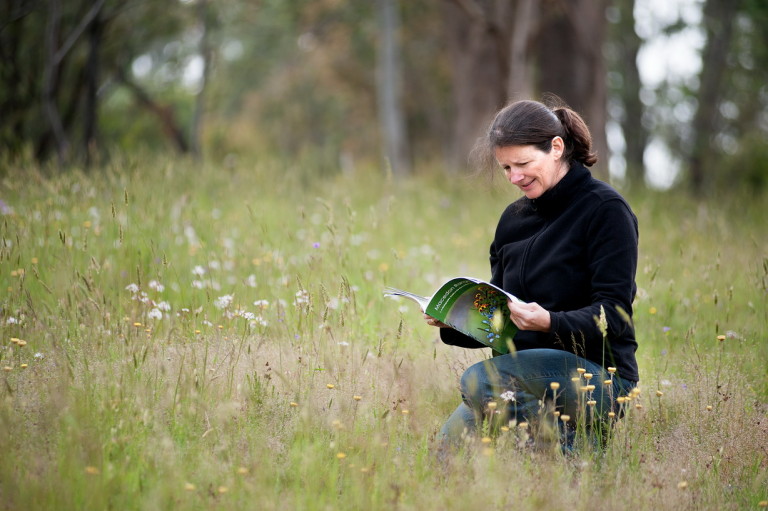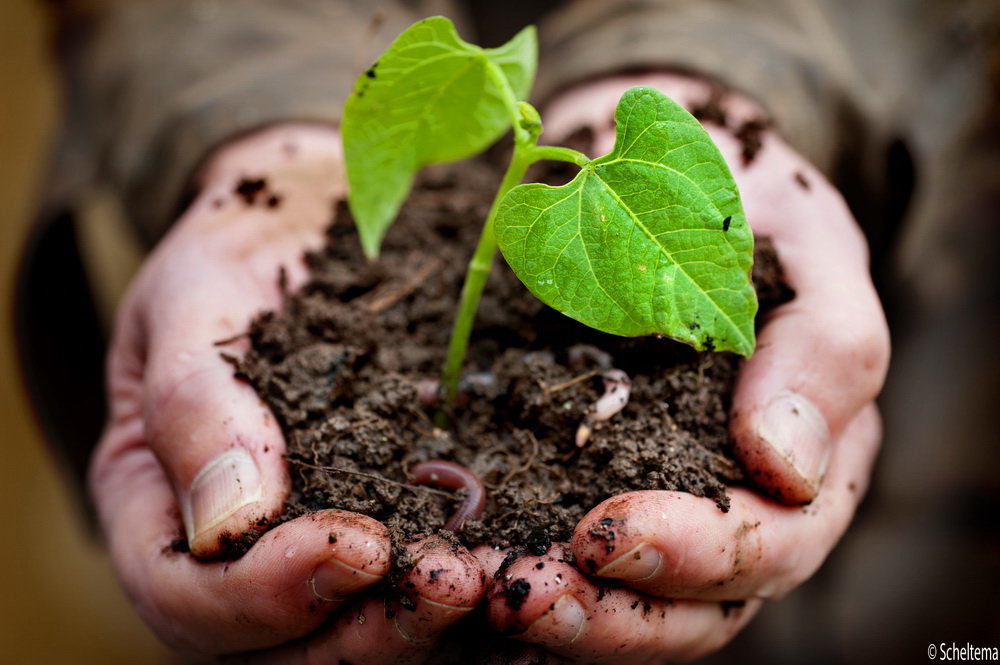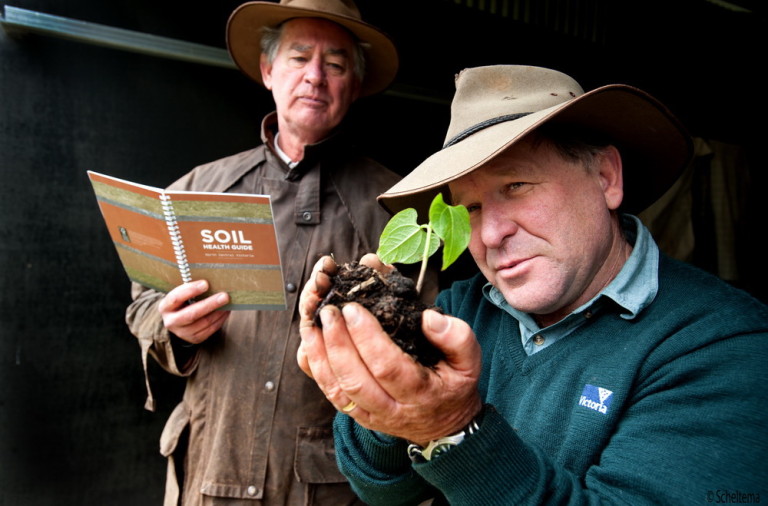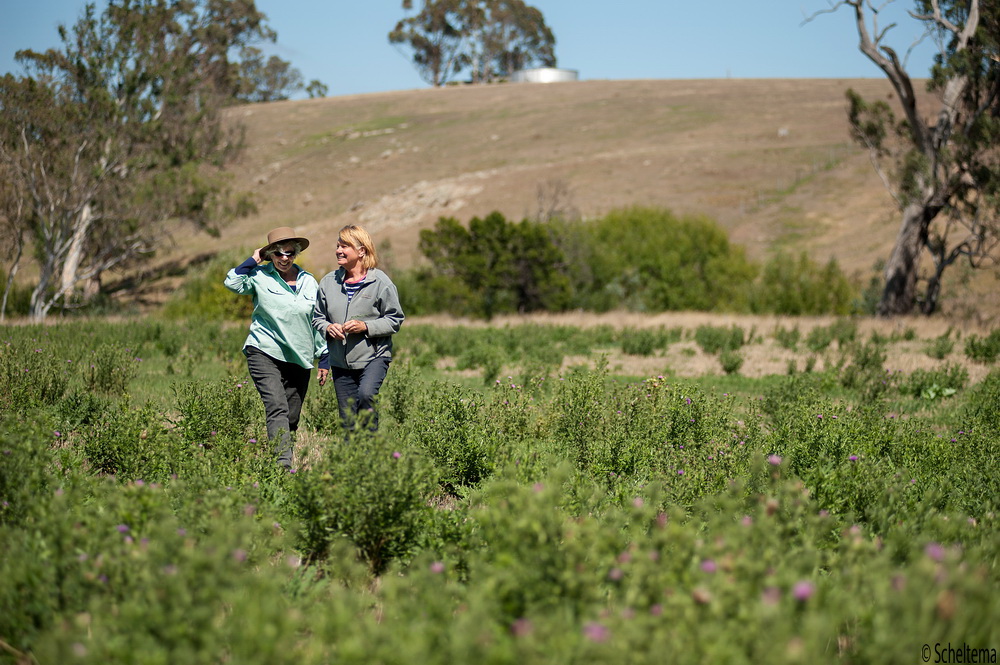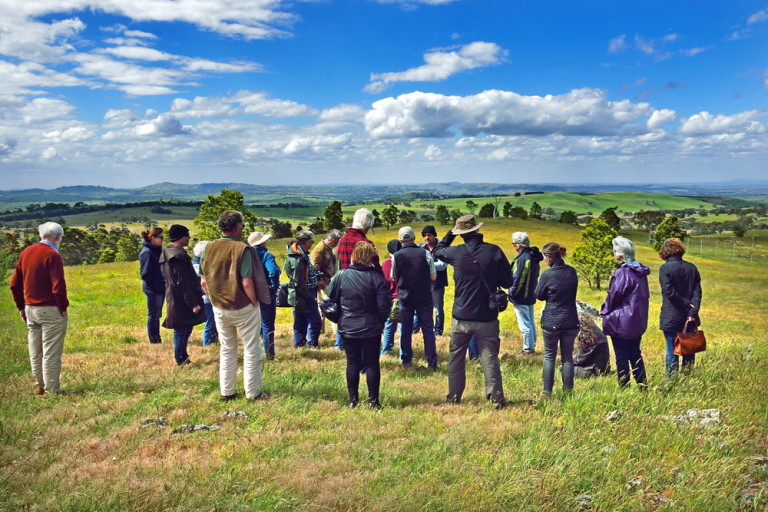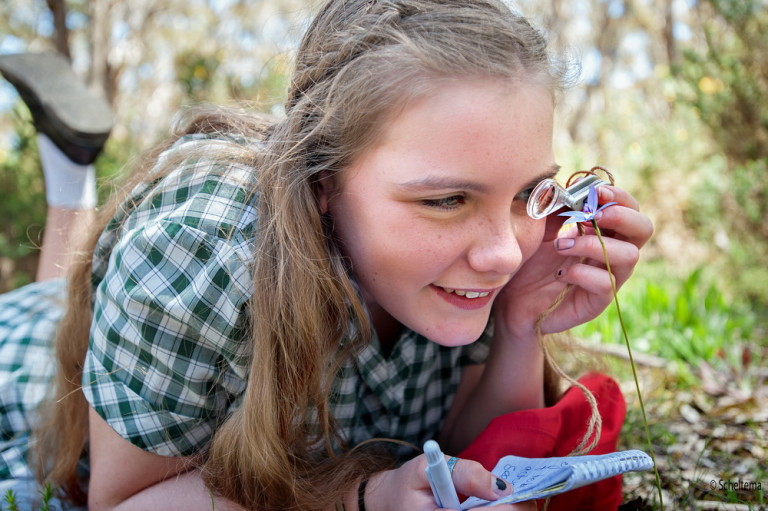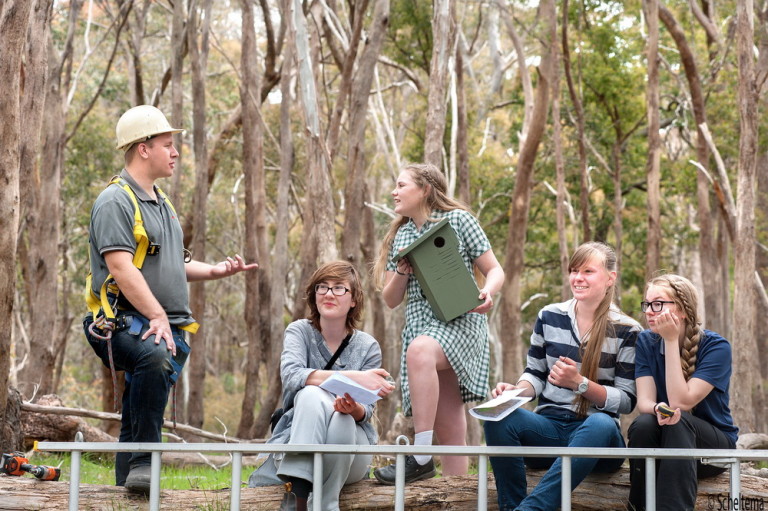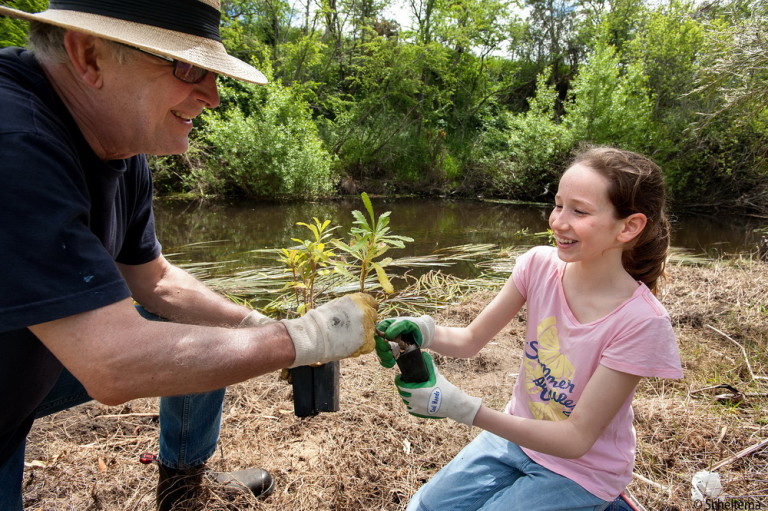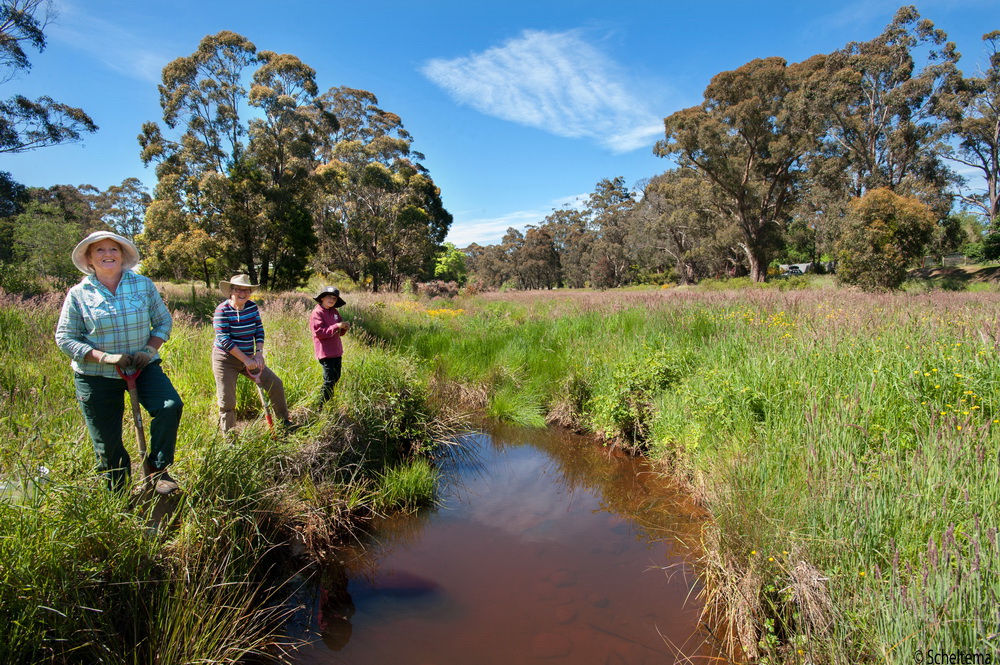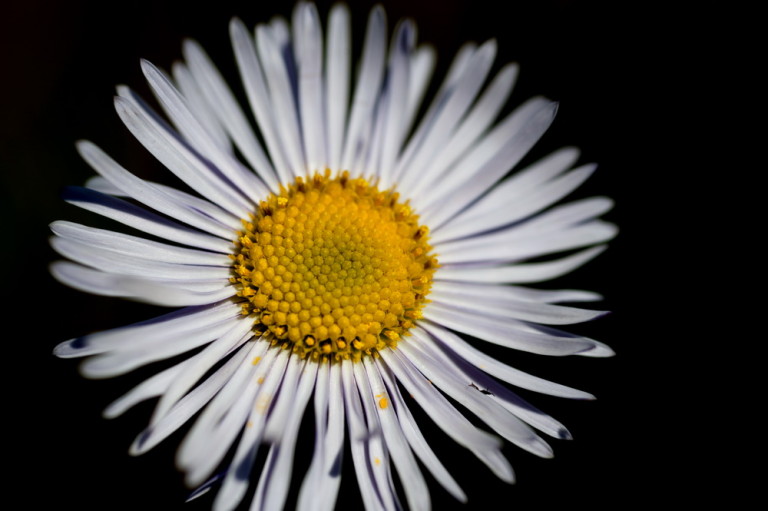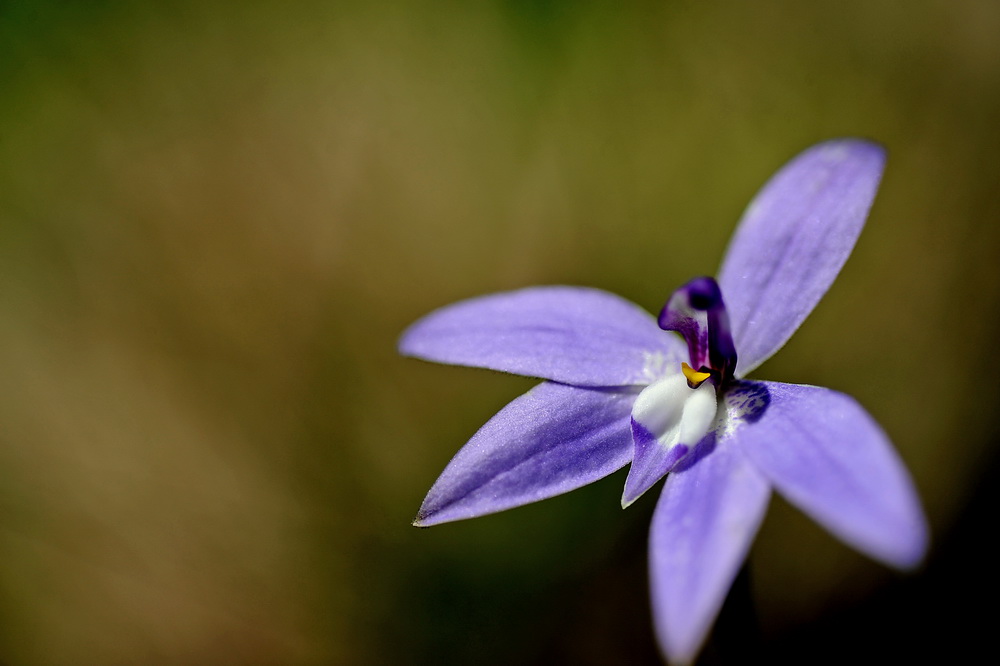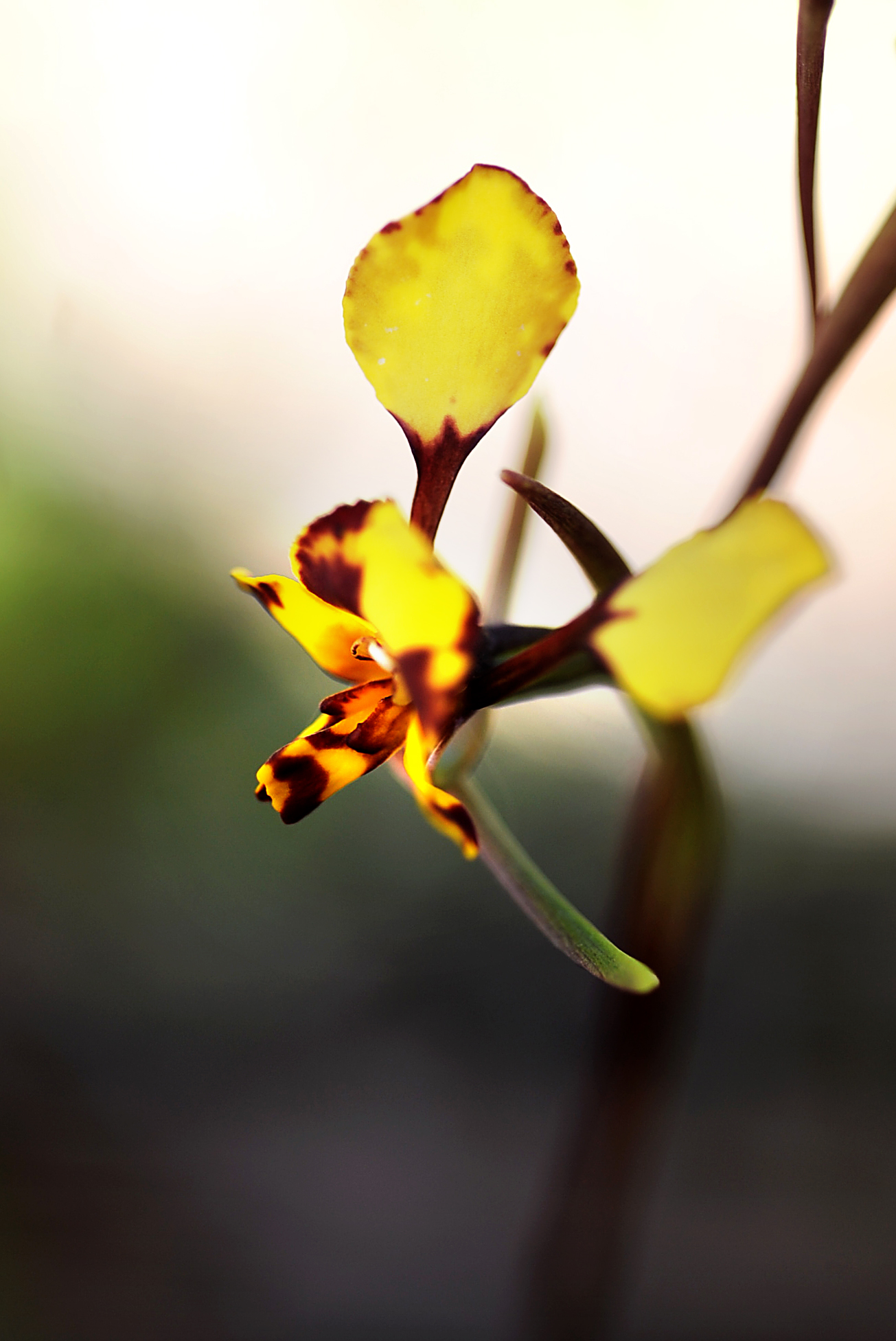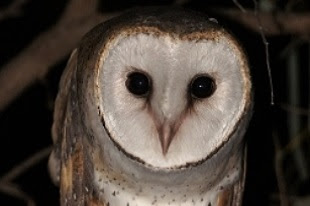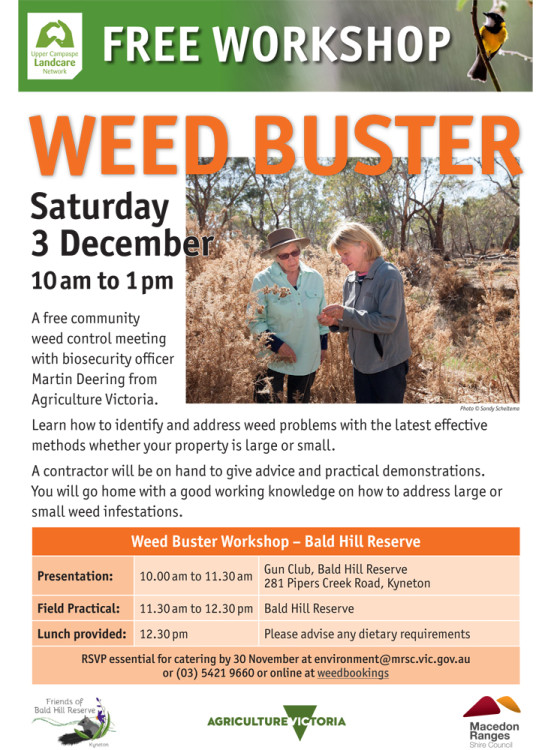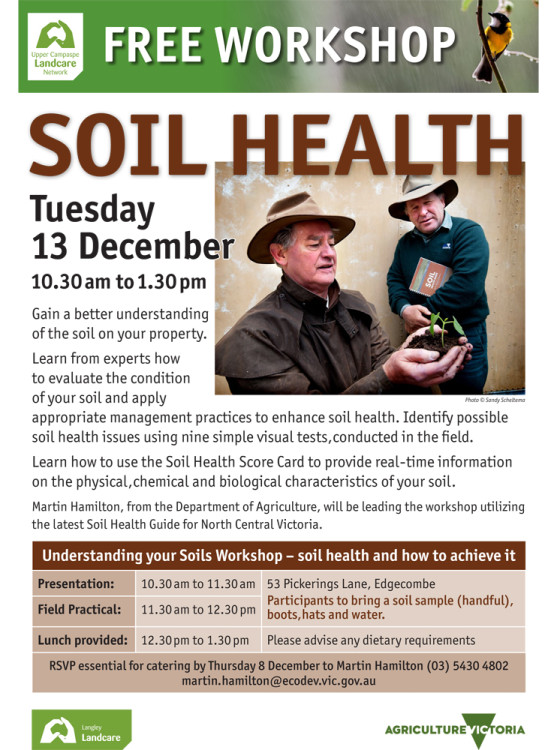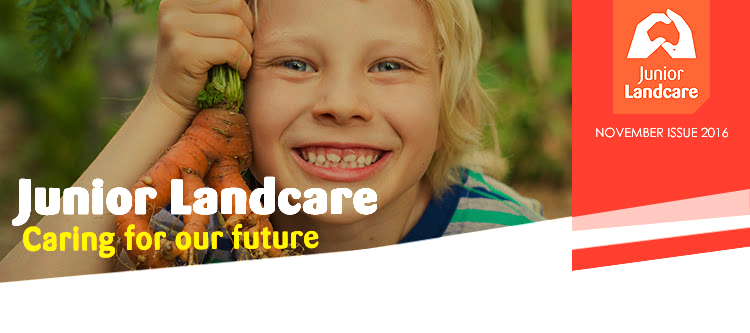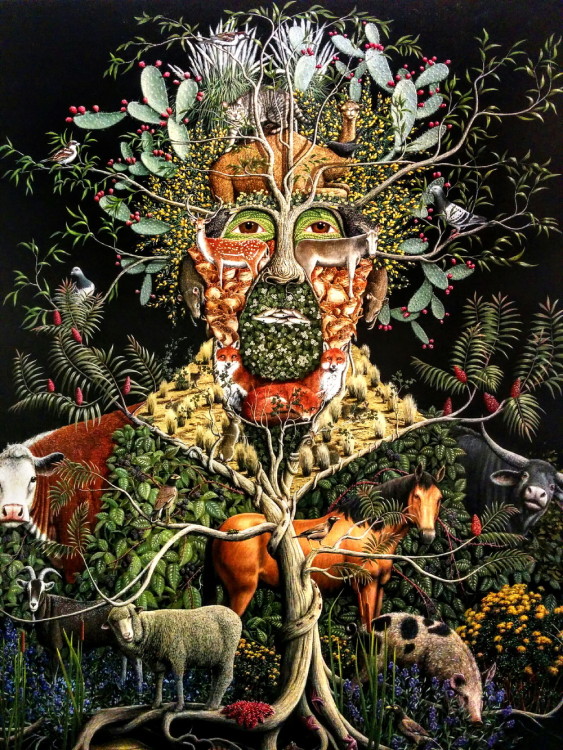- Coliban Connections Field Day
- Kyneton Secondary College and Latrobe Uni Students work with UCLN Landcare Groups
- Serrated Tussock Information, funding and brochures
- National Landcare Conference
- Phascogales and Langley Landcare
- Rabbit Buster Workshop
- News, Events and Information.
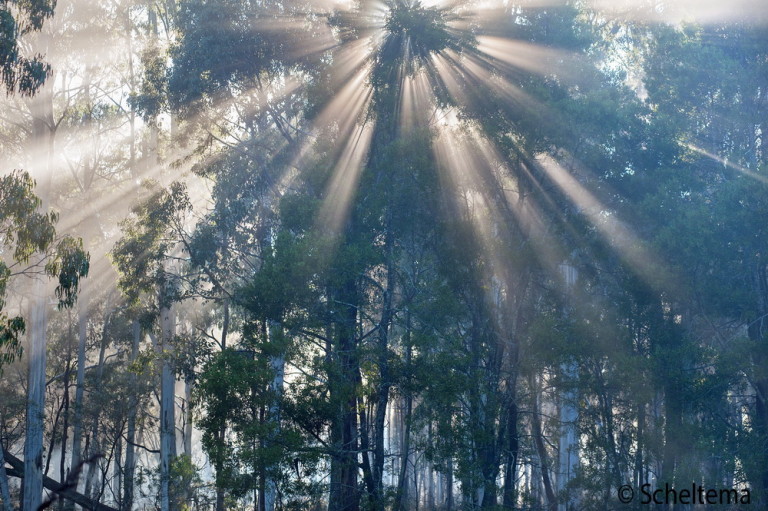
Welcome to our spring ENews for the UCLN. What a wonderful wet spring, however I am sure most of us are ready for some warmer drier weather. I hope you can attend some of the fantastic events on offer to the Landcare and broader community.
The National Landcare Conference was held recently in Melbourne. I was inspired by a range of different speakers and will use some of these ideas to help our Network continue to grow and support the important work you are all doing.
Coliban Connections Field Day
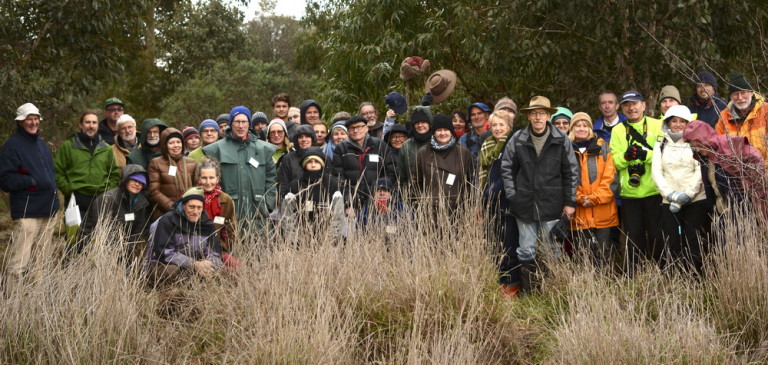
Some of the participants at the Coliban Connections Field Day. Pic John Walter
UCLN’s second Field Day was held in July, with expert grassland and wetland ecologists, Damien Cook and Paul Foreman visiting the Coliban River, Kangaroo Creek and the Little Coliban River.
President of Malmsbury Landcare John Walter said the field day gave participants a chance to learn from experts the values inherent within the environment, and how a community working together can help restore degraded sites.
Brendan Smith, the president of Tylden Landcare, guided participants through a successful re-vegetation project along the little Coliban River.
“In 2004 the Little Coliban River was a silent ooze through the crack willows.
“There was no light coming in, no noise coming out. Now these elements have changed, and it’s alive with the sound of birdlife and full of animals like swamp wallabies with some trees more than eight metres high.”
Despite cold and rainy weather the field day was well was attended by about 55 people.
There were many positive comments from participants about the speakers, variety of sites and general organisation. For media go to Rivers the Lifeblood
Kyneton Secondary College and Latrobe Uni Students work with our Landcare Groups.
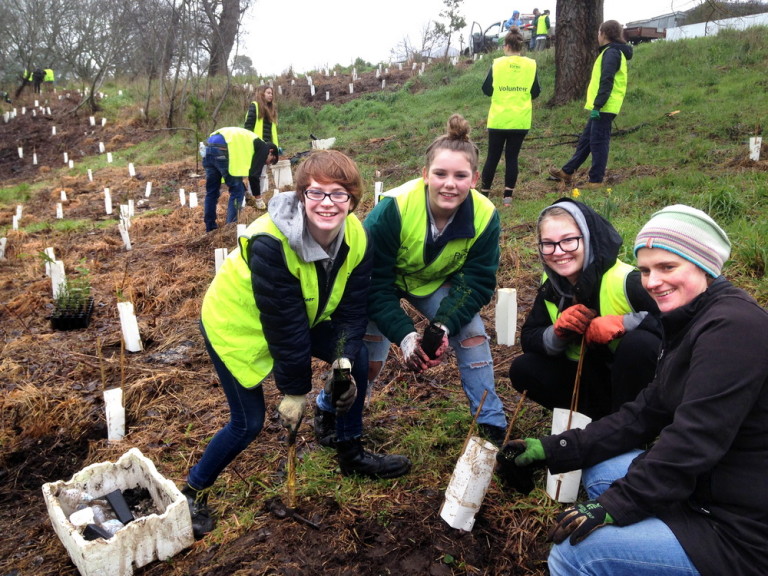
Students from Kyneton Secondary College Estelle, Tiarna and Charlotte, with teacher Dr Anwyn Chapman, planting on National School Trees Day with the Kyneton River and Land Management Group.The group planted over 580 trees on the day. Student Georgia Brown said “We planted a range of indigenous plants including the local threatened species, the Hairy Anchor Plant, which only grows in this part of the catchment.”
“Growing and nurturing the Landcare community is a priority if we are to nurture our Land.” said Liddy Neville, from the Bellarine Landcare group, one of the speakers at the recent National Landcare Conference in Melbourne .
One way the UCLN is growing the Landcare Community is by developing a partnership with students and teachers at the Kyneton Secondary College.We are also working with students from Latrobe Uni to undertake some valuable GIS mapping. So far the students have visited Malmsbury and Newham Landcare projects to commence mapping their projects in a way that is compatible with the NCCMA, and which will eventually be loaded onto the UCLN website. This partnership will continue over the next year with more groups being mapped in conjunction with the students.
Thanks to the Campaspe River and Land Management Group (CR&LMG), students from the Kyneton Secondary College Sustainability Group and Year 9/10 Environmental Science class recently spent time repopulating the Campaspe River with 580 native trees.
This important project involves several community groups coming together to protect our waterways and native vegetation in the Kyneton area.
Mark Ridgeway, Principal of KSC said “Striving for environmental sustainability is an important part of our school vision and one of our school’s core values. We strongly value community participation and providing opportunities for our students to learn how to be global citizens and engage with community projects.”
Peter Harding from the CR&LMG group said “We are appreciative of the immense effort the students of Kyneton secondary College contributed to further the cause of rehabilitating the Campaspe River. The CR&LMG is a small community group and by partnering with the Secondary College we can do better together.”
For media on this event go to Campaspe Planting
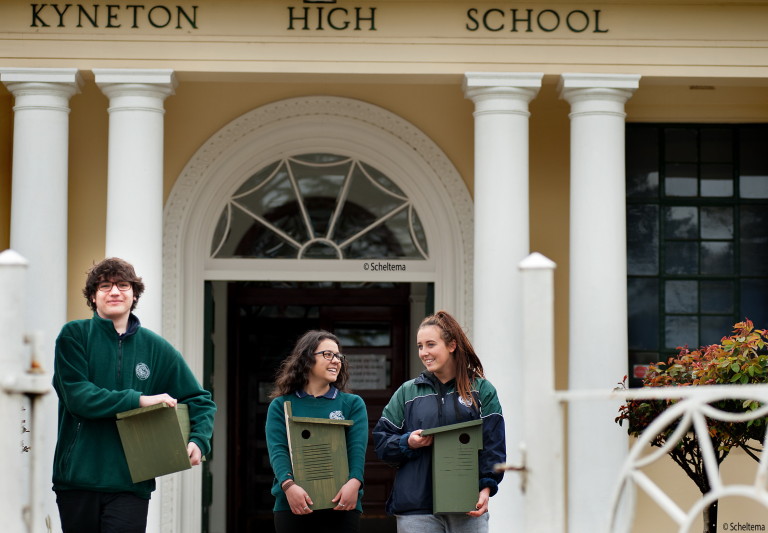
Nest boxes painted by KSC students Alex, Bella and Bailey in preparation for installation at Bald Hill Reserve. “Its nice to know that in a year or so phascogales or possum families might be making a home in them and we are making a difference.”
During National Environmental Science Week Carolyn Robb, President of Friends of Bald Hill Reserve, William Terry (Environmental Officer from the Macedon Ranges Shire Council) and myself spoke to year 9 & 10 Environmental students at Kyneton Secondary College about the work of the UCLN, Bald Hill Reserve and the importance of preserving such a special area.
We asked the students what they learned…
“…that there are over 130 species of flowers at the Bald Hill Reserve.” Tiara
“ …that sugar glider are very soft and that there once were aboriginals at Bald Hill.” Hervey
“…about the different plants and animals at the Reserve. I didn’t realise there were so many endangered species there.” Nikki
“…that the Reserve was used by the military for 80 years before becoming a nature reserve. It was used as a shooting range and training ground for the Light Horse Brigade.” Liam
“…that Bald Hill Reserve has many diverse areas for animals to thrive such as brush tailed possums, kangaroos and phascogales.” Zoe
“…the sounds of various different birds and what is their ecological status.” Paige
“……The speakers were engaging and the talk was very interesting.” Zoe
SERRATED TUSSOCK INFORMATION, FUNDING AND BROCHURES
The Victorian Serrated Tussock Working Party (VSTWP) are keen to provide information/brochures to groups in isolated areas of serrated tussock. They would like to mail/post out some information sheets on identification and management controls, and see if your group needs any help managing the weed.
There is currently a Landcare Field Day Assistance Grant program that aims to help groups host a serrated tussock related field day. It offers Landcare groups the opportunity to receive a one off grant of up to $500 to sponsor the convening of serrated tussock focused field days.
The grant is available to any landcare group that is incorporated and insured , and will be useful in raising the awareness to landowners and managers about the threat posed by this noxious weed. To further support the field day, the VSTWP will provide extension material on serrated tussock identification and management.
The guidelines and application form are on the website below and can be submitted to Executive Officer: Doug.May@ecodev.vic.gov.au
Tussock grants
Please let Ivan Cater (ivancarter@gmail.com) know if your group needs serrated tussock identification and management brochures.
NATIONAL LANDCARE CONFERENCE
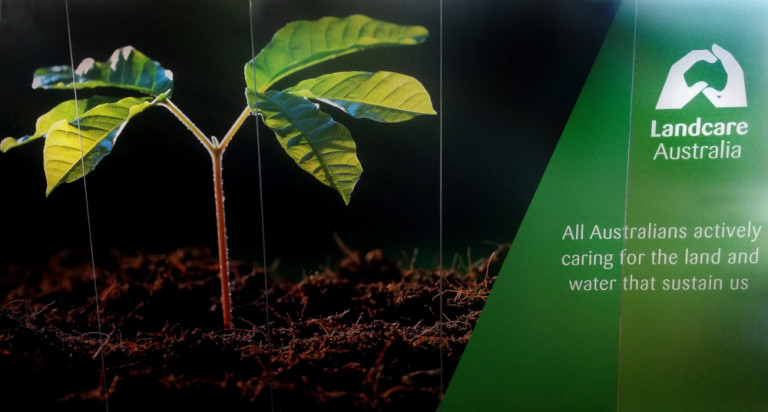
“I’d like to take a moment to recognize the important work undertaken by all of the groups and networks that give their time to care for Victoria’s land, water and biodiversity.Their dedication, enthusiasm and hard work is inspiring, and they too should be celebrated.”
“Landcare plays an important role managing our environment, actively engaging communities to improve the health of our land and water systems.”
Minister for Energy, Environment and Climate Change Lily D’Ambrosio
The 2016 National Landcare Conference was called Collaborative Communities – Landcare In Action.
Environment Minister Ms D’Ambrosio announced the new Victorian Landcare website, a revamped and improved home for Victoria’s Landcare network to improve the communication tools available to Landcarers. I am pleased to say that a picture of one of our groups, The Friends Of Bald Hill, was picked to be on the home page.
The new website should be easier to use and provide simple tools to engage, access and share information between Landcare groups across Victoria. To view the new website visit www.landcarevic.org.au
Some quotes I thought worth repeating from the conference:
“… Land is best managed at a landscape level.”
“…People working in the landscape cooperating together are much more effective.”
“…PEOPLE WILL LEAD – OUR LEADERS NEED TO FOLLOW.”
“…The change will come from individuals working at the local level.”
“…We need to tell our politicians what we are doing”
“…The youth of Landcare are really important.”
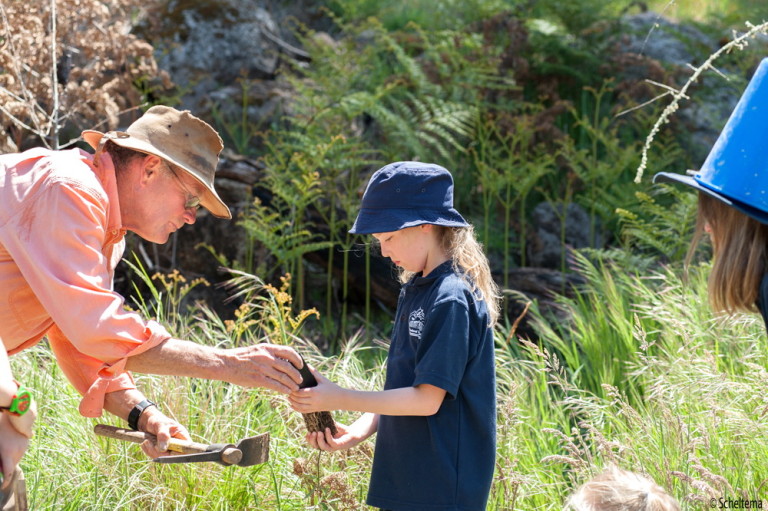
“… We need to get the young people engaged, and capture the enthusiasm of youth.”
” …Thinking globally but acting locally has always been one of Landcares strengths.”
“… We need to reconnect people with nature.”
” …Human health and happiness is linked to the health of our environment.”
” …Landcare is about collaborative communities.”
” …Supporting Landcare is an investment in Australia’s future.”
” …We need to put the community at the centre of our decision making.”
The assistant Minister to the Deputy Prime Minister Luke Hartsyker MP said “the hidden strength of Landcare is your ability to effectively link volunteers, farmers, land managers and many other stakeholders groups to the knowledge that will define the future of effective natural resource management across the natural environment, our farms and communities.”
The Andrews Labor Government this year provided $18 million of new funding over four years to the Victorian Landcare Program, taking the total investment to almost $40 million. For more information on the conference go to www.landcarevic.org.au
Phascogales and Langley Landcare
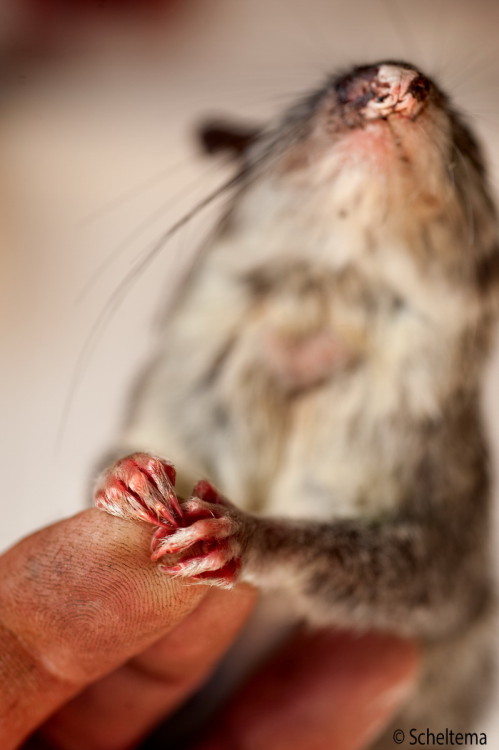
A phascogale found recently by Langley Landcare President Graham Connell midway between Black Hill Reserve and the Campaspe River at Langley.
Langley Landcare is working on placing covenants on areas of conservation significance. This helps animals such as the vulnerable phascogale move from Black Hill Reserve down to the Campaspe River.
Some of the Langley Landcare plantings that were lost in the Jan 2015 fires are successfully regrowing. The group is doing ongoing maintenance, weed control and replanting dead and damaged trees along the Jim Poulter creek, which forms part of the biolink between Black Hill Reserve and the Campaspe River.
President Graham Connell said “Langley Landcare works closely with the NCCMA to fence off important parts of the River and advice on planting riparian areas. We want to protect and enhance remnant vegetation with private landowners in conjunction with the NCCMA, Connecting Country and the UCLN. We want to help educate private landowners on the environmental values of their properties and how they fit into the bigger picture.”
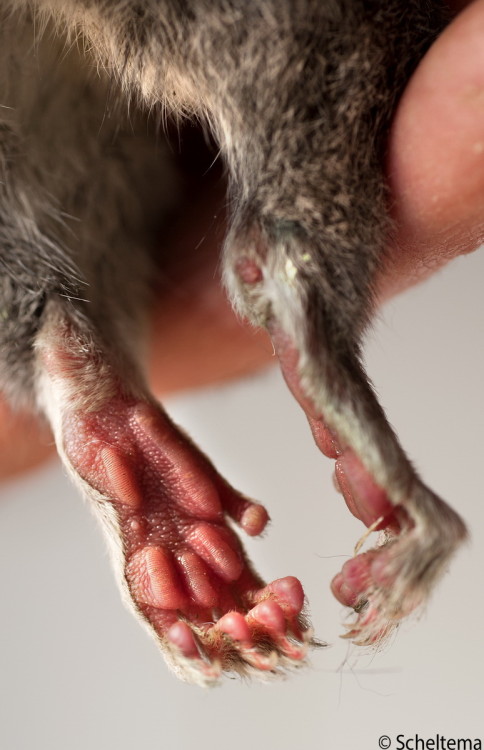
Fascinating phascogale feet. This one, found recently in Langley, is being preserved for educational purposes.
Funded by a gorse task force grant obtained by the UCLN, Brendan Smith from Tylden Landcare is working with Langley Landcare to eradicate gorse. “This is having a community benefit due to the fact it is reducing fuel loads caused by gorse infestation.” said Graham.
Graham has organised to have the phascogale he found preserved for educational purposes after receiving the necessary permits from DELWP. All the valuable work groups such as Langley are doing will help vulnerable, rare and threatened species such as the phascogale to survive.
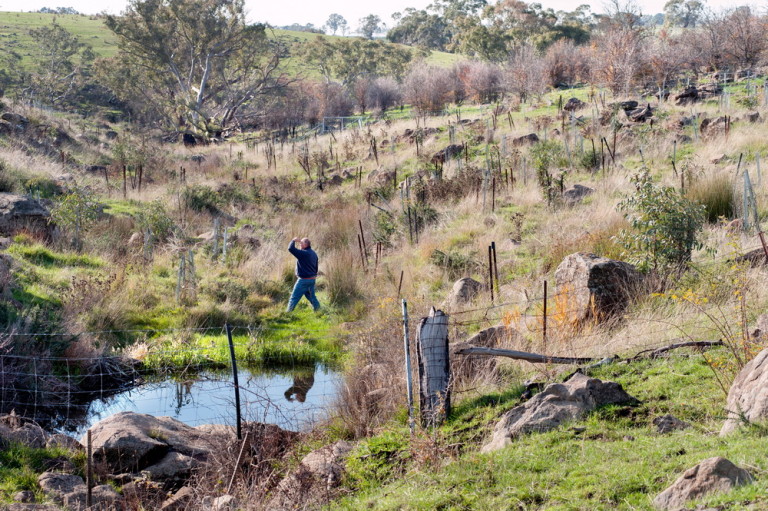
Langley Landcare is continuing with their important work planting along waterways linking the Black Hill Reserve to the Campaspe River which is helping to connect areas of remnant vegetation and create wildlife corridors.
Rabbit Buster Workshop
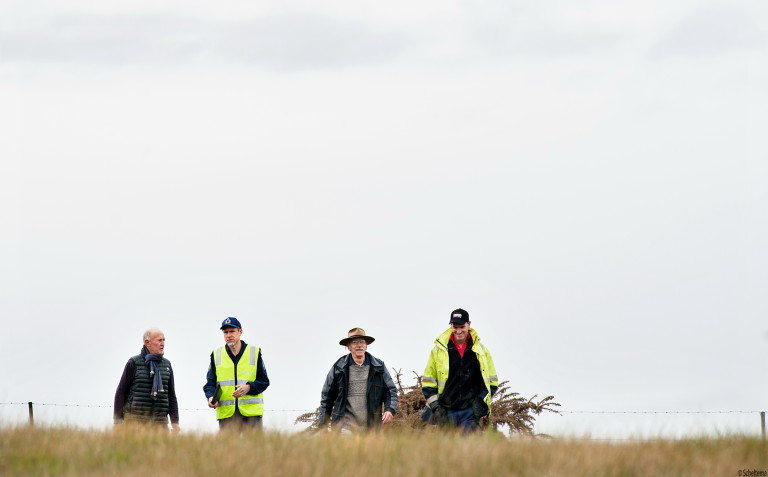
Landowner Richard Fooks, Biosecurity Officer MartinDeering from Dep Agriculture, Malmbsury Landcare member Rob Burdett and contractor Michael Blake plan the upcoming Rabbit Buster workshop in Malmsbury. Pic Scheltema
UCLN and Malmsbury and District Landcare have been working together to prepare the first of three workshops to be held this year, the Rabbit Buster Workshop.
Whether your property is small or large, there will be expert free advice from the Department of Agriculture on how to control them. And a free lunch!
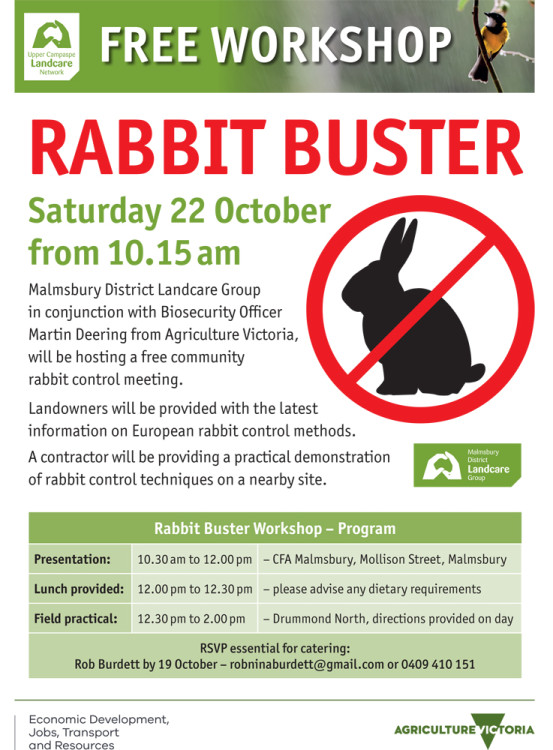
Events and Newsletters
LATEST VICTORIAN LANDCARE MAGAZINE
Issue 67 of the Victorian Landcare and Catchment Management magazine celebrates the 30th anniversary of Landcare and looks towards the future.
Stories in this issue include:
- Reflections of a young Landcare leader:
- Stories from a number of long-running groups regarding their achievements and resilience
- Reflections from respected landcarers, Lyn Coulston, Peter Forster and Alice Knight
- Rob Youl explores the development of Landcare – from local community action to international movement
- FTLA looks to the future: over 75 FTLA members discuss the challenges and opportunities ahead for the next 30 years of Landcare
Read it here: Issue 67 Landcare Mag

The NCCMA Landcare team have asked UCLN to extend an invitation to you all to attend the ‘30th Anniversary of Landcare Celebration event’ on Saturday October 15 2016 in St Arnaud.
Please find the event details and RSVP information on the invite by clicking here – 30th Event.
Macedon Ranges Shire Environment Events 2016-17
The shire have a great program of environment events for the year ahead featuring Tim Flannery, woodland birds, spotlight tours and more.
Click here to view their event calendar 2016
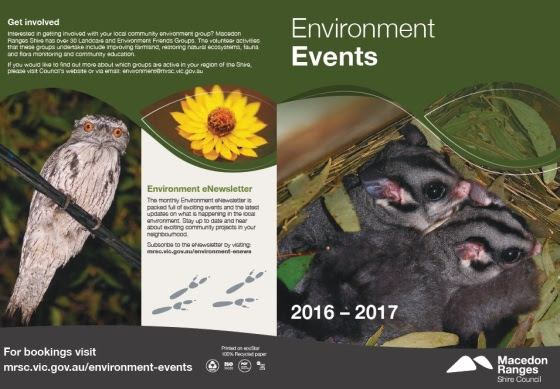
NCCMA CHAT
Yes I know it is almost October and the new one will be out soon but here is the September issue in case you haven’t read it. CLICK HERE
Threatened species: we do have time to turn it around if there is political will.
And finally a very interesting article on threatened species by Margaret Blakers in the Guardian. Threatened species: we do have time to turn it around if there is political will. Guardian-Threatened Species
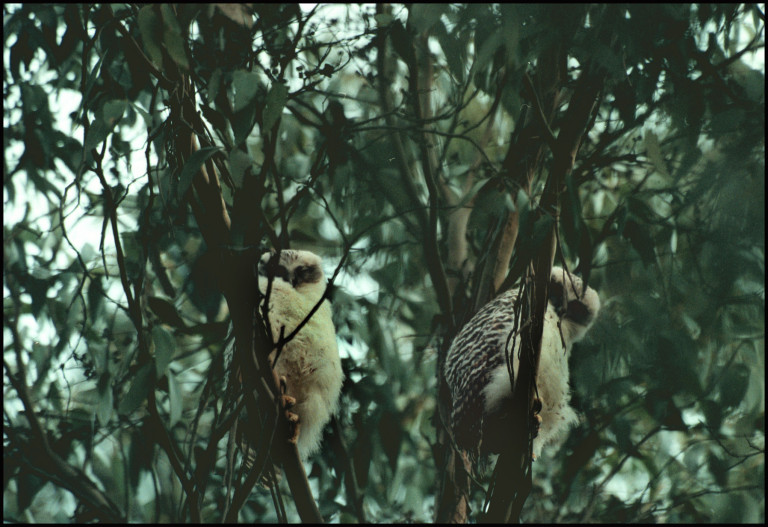
Cats kill an estimated 75 million native animals across Australia every night. Australia has the highest extinction rate of native species on earth.The impact of feral cats has been recognised as one of the major threats to Australia’s unique native and endangered wildlife. In many cases, feral cats could be the final threat that causes a species to become extinct. Take part in the first study of its kind click here – PARTICIPATE IN SURVEY ›

I was asked to include this in our Newsletter for those who may wish to control feral animals on their properties.
